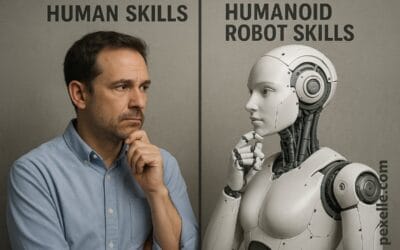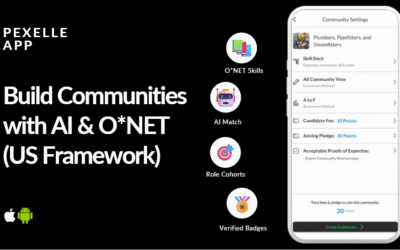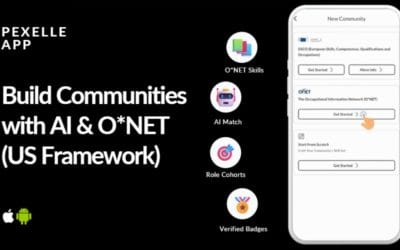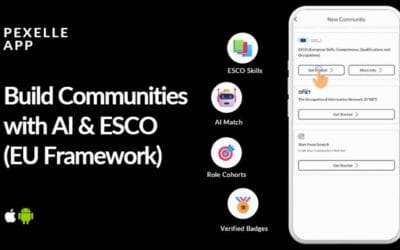Ways to Identify Fake and Real Skills through AI

In recent years, artificial intelligence (AI) has emerged as a powerful tool in various fields, from healthcare to finance, education, and recruitment. One of the areas where AI has made significant strides is in the identification and verification of skills—whether they are genuine or fake. With the increasing number of people acquiring certifications and job roles online, distinguishing between real and fake skills has become a growing challenge. This article explores some of the methods and approaches AI uses to differentiate between authentic and fabricated skills.
1. AI-Powered Resume Screening
One of the first steps in identifying real versus fake skills is through AI-powered resume screening. Employers use AI tools that analyze resumes for accuracy and authenticity. These tools look for inconsistencies, contradictions, or exaggerations in the claimed skills and experiences of a candidate. For example, an AI might cross-check the listed skills against industry-standard qualifications or certifications available in public databases. It can also detect patterns of overuse or misrepresentation of certain skills that do not match the candidate’s actual professional history.
2. Automated Skill Testing
AI is also used to automate skill testing during recruitment processes. For example, AI-driven platforms offer technical assessments, coding challenges, and aptitude tests tailored to specific roles. The results from these tests are evaluated by AI algorithms to gauge whether the applicant possesses the skills they claim. This method allows companies to accurately determine whether a candidate’s abilities align with their stated experience, helping to weed out those who falsely claim expertise in areas they are not proficient in.
3. Natural Language Processing (NLP) for Text Analysis
Natural Language Processing (NLP), a subset of AI, is particularly useful in identifying fake skills in written content. Many fake resumes or profiles include over-generalized statements about one’s expertise, which can be flagged using AI tools that assess the language and structure of the text. NLP algorithms analyze the phrasing, tone, and context of claims made about skills. For instance, vague descriptions of abilities, such as “experienced in technology” or “proficient in IT,” are often indicative of fabricated expertise. On the other hand, authentic skill claims tend to include more specific and detailed information, backed by clear examples or experiences.
4. Data Mining for Credential Verification
AI can also be used to verify academic credentials and professional certifications. By employing data mining techniques, AI tools can cross-check an individual’s credentials against trusted educational databases, certification organizations, and even social media profiles. For example, AI algorithms can search for online records and reviews of universities, online courses, and credentialing organizations. If a person claims to have a certification from an institution that does not exist or is not recognized, AI can automatically flag this discrepancy.
5. Behavioral Analytics to Assess Skill Application
AI can also monitor the practical application of skills over time. Behavioral analytics tools track the actions, decisions, and problem-solving abilities of individuals in a real-world setting. For instance, AI systems integrated into productivity platforms can observe how employees complete tasks, analyze their performance, and provide feedback based on their actions. If someone claims a high level of expertise in a field but consistently performs at a novice level, AI can help identify this gap, thus uncovering fake skills.
6. Social Media and Network Scraping
Another way AI identifies fake skills is by analyzing a candidate’s social media presence. AI systems scrape platforms like LinkedIn, GitHub, or personal websites to evaluate whether a person’s online activities match their claimed skills. These systems can detect inconsistencies between the skills listed on a resume or job profile and the actual content, projects, or discussions shared by the individual online. A lack of activity or minimal interaction in relevant professional groups can be a sign that someone’s expertise might not be as extensive as they claim.
7. Blockchain for Skill Verification
While still emerging, blockchain technology is gaining traction in skill verification. AI can work in tandem with blockchain to securely verify skills and certifications. Through blockchain, each certification, training program, or skill claim can be stored in a decentralized ledger, making it tamper-proof and easily accessible for employers. When combined with AI, blockchain allows for real-time, automated verification of skills as individuals submit their credentials for job applications.
8. Machine Learning and Predictive Analytics for Skill Growth
AI also employs machine learning algorithms to track skill development over time. Predictive analytics can forecast how quickly an individual is likely to acquire or improve certain skills based on historical data and learning patterns. If an individual claims proficiency in a skill that typically takes years to master, AI may flag this as a potential red flag. Conversely, it can also highlight potential for growth in an applicant who has shown rapid skill development in previous roles.
Conclusion
AI plays a crucial role in the process of identifying real versus fake skills. With the advent of advanced machine learning algorithms, natural language processing, and data mining techniques, AI systems are becoming more adept at detecting inconsistencies and verifying the authenticity of claimed expertise. This not only benefits employers but also enhances the accuracy and fairness of hiring processes. As the technology continues to evolve, we can expect AI to become an even more integral part of ensuring that skill claims are truthful and reliable.
Source : Medium.com




